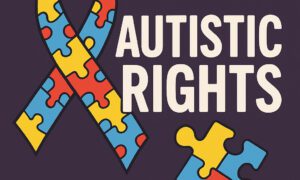Many people believe that bad credit automatically disqualifies them from obtaining a mortgage. While having a low credit score can make the process more challenging, it is still possible to secure a mortgage with bad credit by exploring specialized lenders and options designed for higher-risk borrowers.
Lenders will often look beyond just the credit score, considering factors like income stability, debt-to-income ratio, and overall financial history. Understanding these criteria can help those with bad credit identify the right strategies to improve their chances of approval.
Navigating bad credit mortgages requires knowledge of different loan types and the willingness to shop around for the best terms. This article will provide clear guidance on how to approach bad credit mortgage applications effectively.
Understanding Bad Credit Mortgages
Bad credit mortgage offer a way for individuals with low credit scores to secure home financing. These loans differ in terms and eligibility compared to standard mortgages. Understanding how credit affects access, what options exist, and the nature of these loans is essential for informed decisions.
What Is a Bad Credit Mortgage
A bad credit mortgage is a home loan designed for borrowers with credit scores that fall below typical lender thresholds. These mortgages often come with higher interest rates and stricter terms due to the perceived risk.
Lenders providing these loans consider factors beyond credit scores, such as income and employment history. Borrowers may face larger down payment requirements to offset the lender’s risk.
Such mortgages help those with a history of late payments, defaults, or limited credit history to access homeownership opportunities despite previous financial challenges.
How Credit Scores Affect Mortgage Eligibility
Credit scores influence mortgage approval chances and the loan’s cost. Scores below 620 generally classify as bad credit in mortgage contexts, reducing approvals from conventional lenders.
Lower scores usually result in higher interest rates, increased fees, and stricter lending conditions. Lenders see poor credit as an indicator of increased default risk and act accordingly.
Some lenders set minimum score requirements around 500-580 for bad credit mortgages, but approval also depends on income stability, savings, and other financial factors.
Types of Bad Credit Mortgage Options
Several mortgage types target those with bad credit:
- FHA loans: Insured by the government, allowing lower scores (usually 580+) with modest down payments.
- Subprime loans: Offer credit to high-risk borrowers but feature higher rates and costs.
- Portfolio loans: Held by lenders rather than sold, providing flexible underwriting but often higher rates.
- Co-signer loans: Involve a co-borrower with better credit to improve approval chances.
Understanding the balance of risks, terms, and costs is vital when selecting the right option.
Steps to Qualify for a Bad Credit Mortgage
Qualifying for a bad credit mortgage requires specific preparation in several areas. Addressing financial documents, credit improvement, and lender selection are essential steps in increasing approval chances and securing better terms.
Preparing Your Financial Documentation
Lenders focus heavily on financial documentation to assess the borrower’s ability to repay. Essential documents include recent pay stubs, W-2 forms, tax returns for the past two years, and bank statements. These prove stable income and financial habits.
It is important to also prepare proof of any additional income sources, such as freelance work or benefits. Debt statements, including credit card balances and existing loan information, should be available. This helps lenders gauge debt-to-income (DTI) ratio.
Organizing documents clearly and promptly can speed up the application process. Any discrepancies or missing paperwork may lead to delays or rejection.
Improving Credit Before Applying
Improving credit scores even slightly can result in better mortgage terms. Paying down high credit card balances to reduce utilization below 30% is a key step. On-time payments for at least three to six months before applying make a positive impact.
Avoid opening new credit accounts or making large purchases on existing credit. Removing errors on credit reports by disputing inaccuracies also strengthens credit profiles.
Even modest improvements can differentiate candidates in the eyes of lenders. Focus on maintaining a history of consistent payments over chasing rapid score increases.
Finding Suitable Lenders
Not all lenders have the same criteria for bad credit mortgages. Specialized lenders, often called subprime or non-conforming lenders, cater to borrowers with scores below 620. These lenders typically require higher down payments and charge higher interest rates.
Comparing lender requirements and pre-approval offers is critical. Brokers who specialize in bad credit loans can provide multiple options.
Review terms carefully, including fees, interest rates, and penalties for late payments. Choose lenders offering transparency and flexibility.





























